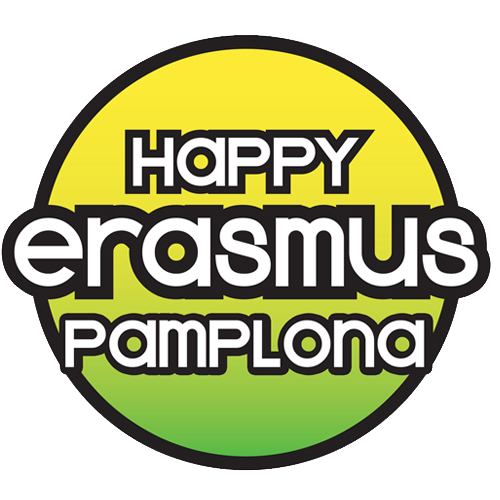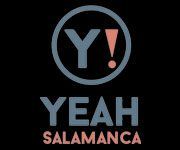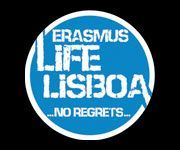Join Happy Erasmus for an unforgettable trip to northern Spain! Discover the best of Asturias, from the elegant streets of Oviedo to the lively coastal vibe of Gijón. We’ll also visit the stunning Covadonga Sanctuary. Expect amazing views, great food, and a fun international atmosphere! The perfect mix for a weekend full of memories!
ASTURIAS
Join us as we take you to the vibrant heart of Asturias, exploring the dynamic cities of Gijón and Oviedo. Both cities beautifully blend tradition with modernity, offering visitors a rich mix of historical charm and contemporary life. You’ll discover unique architecture, fascinating museums, a diverse cultural scene, and an exciting nightlife. During the trip, you’ll have the chance to visit the must-see sights, enjoy some free time to explore on your own, shop, or simply soak in the beauty of nature. And of course, we’ll end the day dancing in the best clubs these cities have to offer!
Day 1
COVADONGA SANCTUARY
Located about 11 km from Cangas de Onís, the Sanctuary of Covadonga holds great cultural significance for Asturias. It is a place where nature, history, and religion come together in a powerful way. The sanctuary complex includes the stunning Basilica of Covadonga, a sacred cave with a small chapel inside, several religious buildings, and various surrounding structures, all set against a breathtaking natural backdrop.
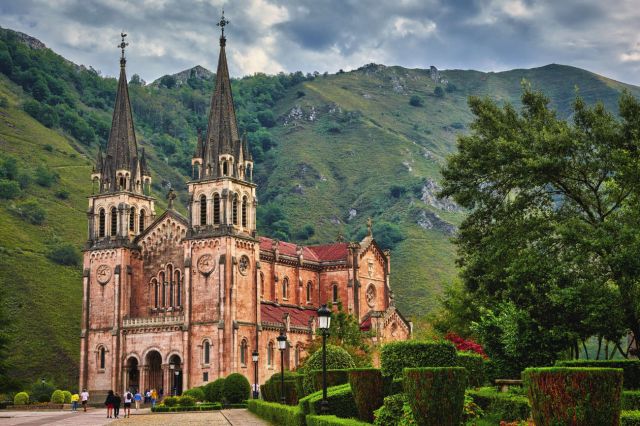
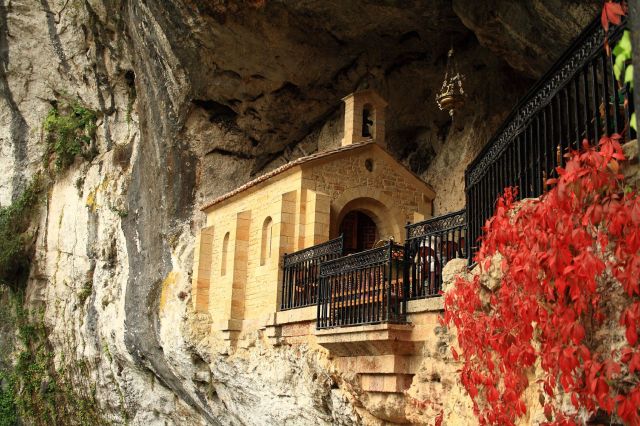
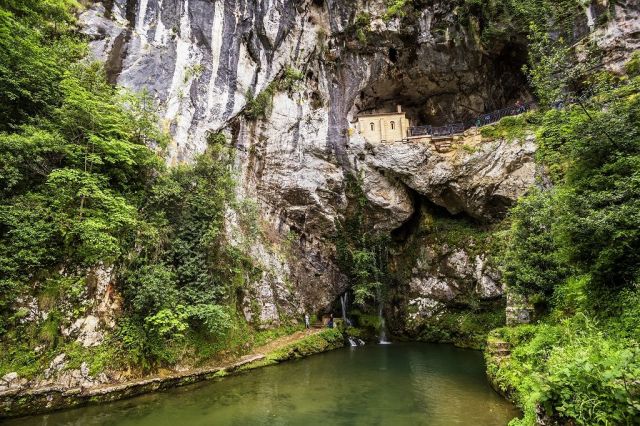
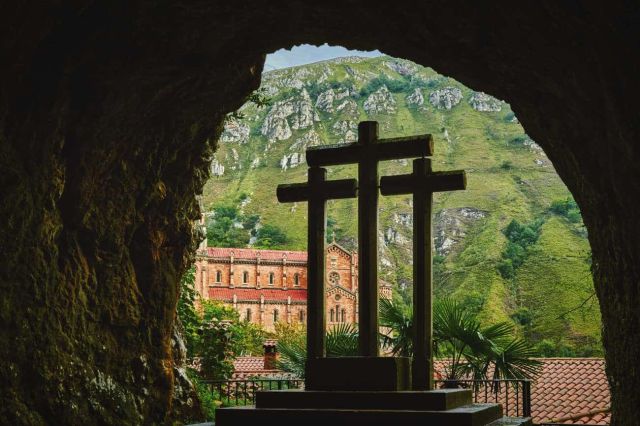
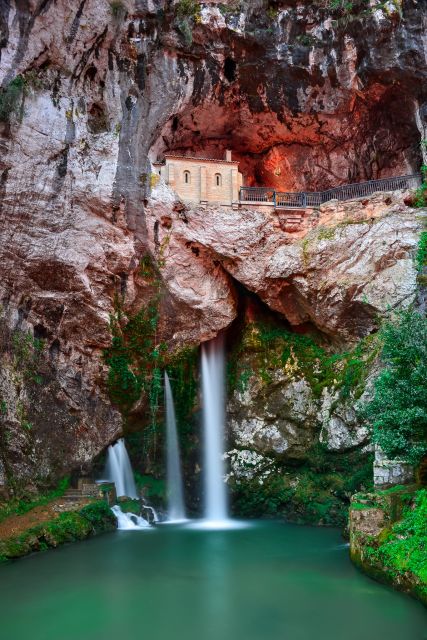
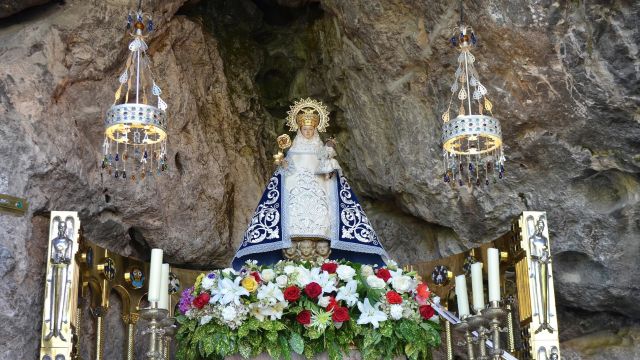






The Basilica
After navigating the winding, steep roads, you'll arrive at the Basilica of Covadonga, located near the Santa Cueva. Construction of the basilica took place between 1877 and 1901, and the use of local stone from the surrounding mountains gives it its distinctive rosy hue. Legend has it that during the groundbreaking ceremony, King Alfonso XII fired a cannonball over Mount Cueto, which created a hole where the basilica now stands. The basilica is also home to the impressive bell, "La Campanona", which stands three meters tall and weighs a remarkable four tons.
The Cave
Inside the Holy Cave, you'll find a small chapel and a few benches, offering a tranquil space for those seeking a moment of spiritual reflection. At the far end of the cave, the image of the Virgin of Covadonga is displayed. Before reaching the statue, you'll pass a tomb with an inscription that reads: "Here lies King Don Pelayo, elected in the year 716, who began the restoration of Spain in this miraculous cave. Having defeated the Moors, he died in 737, with his wife and sister by his side." There are two paths to access the cave: one leads from the basilica esplanade, while the other winds up through a set of stairs at the base of the mountain. The latter path is often climbed by pilgrims on their knees, as a gesture of devotion or in fulfillment of a vow made to the Virgin.
OVIEDO
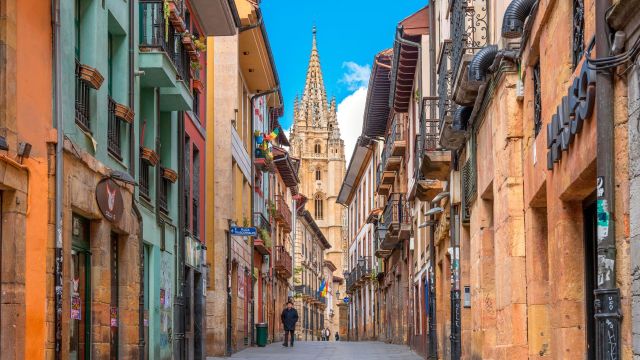
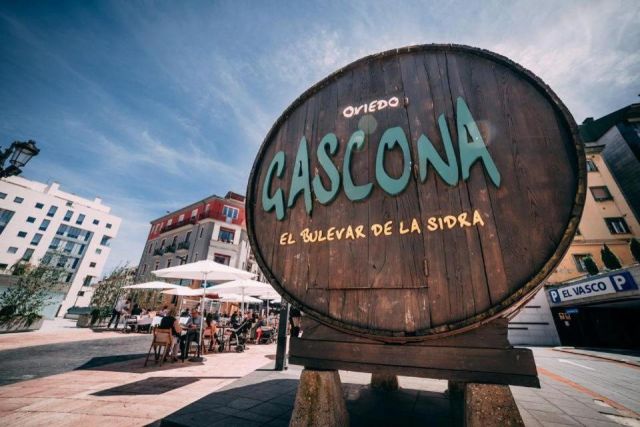
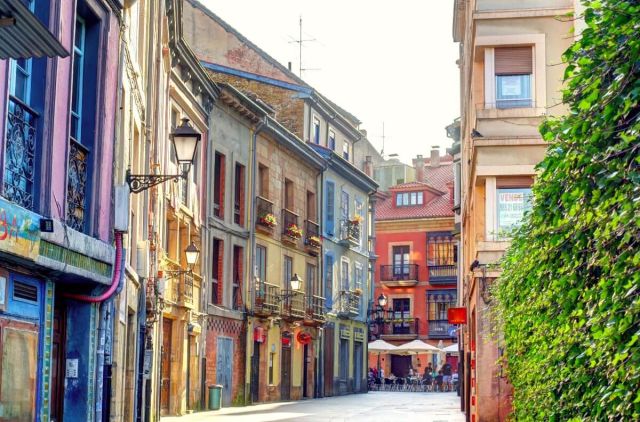

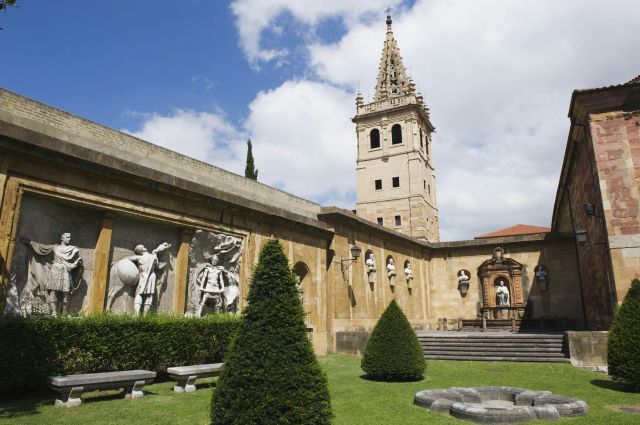
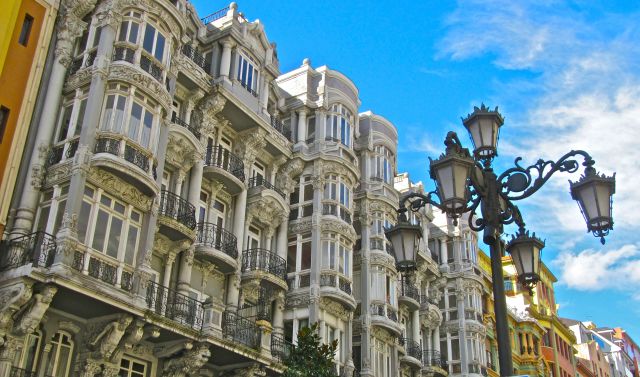
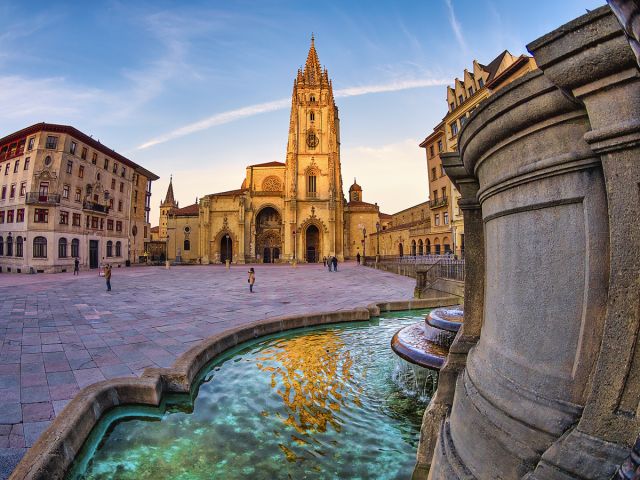
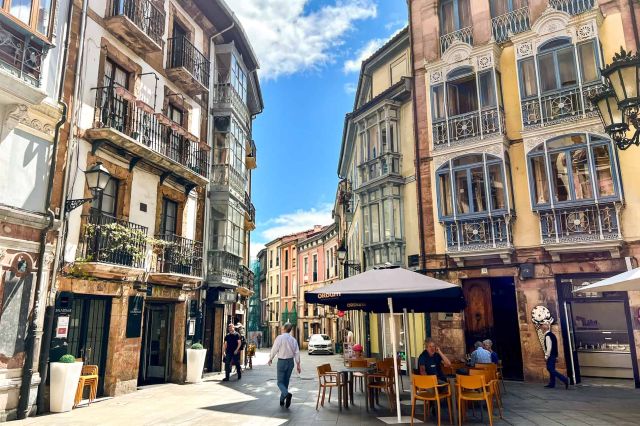
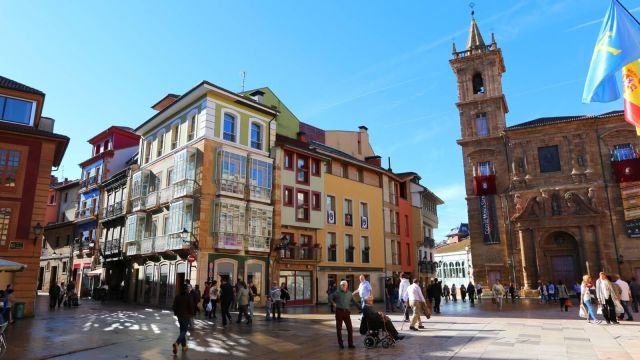









The origins of Oviedo are steeped in legend, making it a city with all the epic qualities of a great metropolis. As the capital of Asturias, it is both welcoming and vibrant, offering something new to experience every day. The city has a rich cultural and commercial life. With its compact size, Oviedo is perfect for relaxed walks, where every corner reveals hidden gems: the historic Fontán Market, the ancient Pre-Romanesque La Foncalada fountain, a Cathedral showcasing both Gothic and Romanesque towers, and a charming old town that has inspired literary figures like Clarín and Pérez de Ayala. The city is also home to modern architecture and a lively cultural calendar, including the annual opera season and the prestigious Princess of Asturias Awards, among many other important events.
Old Town
The historic center of Oviedo has preserved much of its 19th-century charm, standing in contrast to the modern architecture that dominates other Spanish cities. Over the past decade, various restorations and reconstructions have been carried out to maintain this historical essence. The city’s many pedestrian streets, free from the intrusion of cars and modern vehicles, offer a glimpse into life as it was in past centuries. In many ways, Oviedo feels like a step back in time, retaining the same atmosphere that Leopoldo Alas “Clarín” vividly described in his renowned novel, “La Regenta”.
Cathedral of Oviedo
The Cathedral of San Salvador de Oviedo boasts a rich history spanning over thirteen centuries, with its origins dating back to the 8th century when the first temple was built under the reign of Asturian King Fruela I. In 794, the church was partially destroyed during an attack on Oviedo by a Muslim army.
Los Reyes Garden
Located on the northern side of the Cathedral of Oviedo, on Calle del Águila, right across from Plaza de Alfonso II el Casto, this monument features representations of the twelve Kings of Oviedo, ranging from Pelayo to Alfonso III. The first three, Pelayo, Favila, and Alfonso I, are depicted in a mural by Gerardo Zaragoza, who also sculpted the statues of Fruela I and Ramiro I, along with busts of Aurelio, Silo, Mauregato, Bermudo I, and Ordoño I.
Plaza de la Escandalera
Plaza de la Escandalera is a prominent square in Oviedo. Situated between the city’s historic and commercial districts, it serves as a popular thoroughfare for both locals and visitors. The square has a rectangular shape and is bordered to the west by the parallel streets Paseo de los Alamos and Urea, as well as the Campo de San Francisco. To the east, it connects to San Francisco Street at the southern corner, while Argüelles Street runs along the northern edge, with Pelayo Street branching off tangentially.
Woody Allen statue
Located on Calle Milicias Nacionales, the Woody Allen statue is one of Oviedo’s most photographed urban sculptures. Created in 2003 by Vicente Menéndez-Santarúa, it honors the American filmmaker, who visited the city in 2002 to receive the Prince of Asturias Award for the Arts.
Allen praised Oviedo as “beautiful, clean, and tranquil,” and his admiration inspired the city to commemorate him with this life-size bronze figure, depicting him in his iconic glasses and casual attire.
Part of Oviedo’s open-air museum of over 100 public sculptures, the statue captures a unique cultural connection between the filmmaker and the Asturian capital.
Campo de San Francisco
Campo de San Francisco is the largest green space in Oviedo, serving as the city's central park. Nestled in the heart of the city, it is bordered by some of the most important and bustling streets, including Uría Street, making it an ideal escape from the urban rush. This expansive park is a popular spot for both locals and visitors to relax, enjoy nature, and take in the peaceful atmosphere. It also hosts a variety of events throughout the year and is home to impressive sculptures, fountains, and historical landmarks. The park’s tranquil environment, with its tree-lined paths and grassy areas, provides a perfect blend of relaxation and recreation in the midst of the city.
Day 2
GIJÓN
Located along the shores of the Cantabrian Sea, Gijón blends maritime tradition with rich monumental heritage and contemporary urban design, all set against the coastline. The city's marina stands as a proud symbol of its long-standing maritime legacy, one that has evolved over centuries.
Gijón was recognized in the European Commission's EDEN programme (European Destinations of Excellence), thanks to its commitment to sustainable tourism.
The city's history is reflected in its architecture, with landmarks from its early Roman settlement to the growth it experienced in the 16th century when the Catholic Monarchs established a port. This development continued into the Enlightenment period, during which Gaspar Melchor de Jovellanos played a key role in the region's significant economic and social progress.
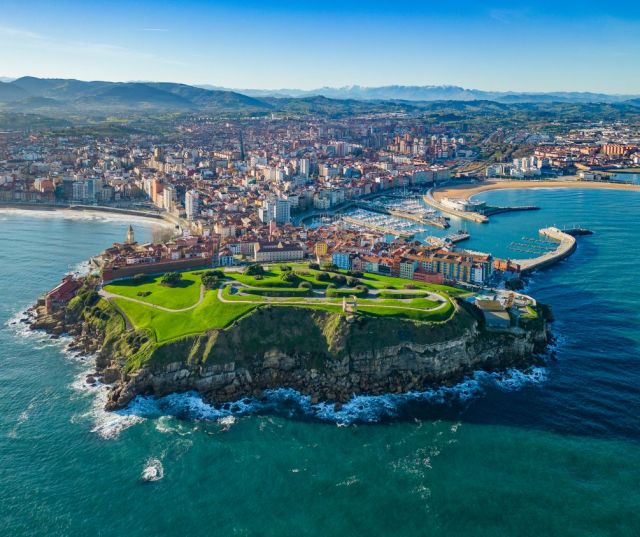
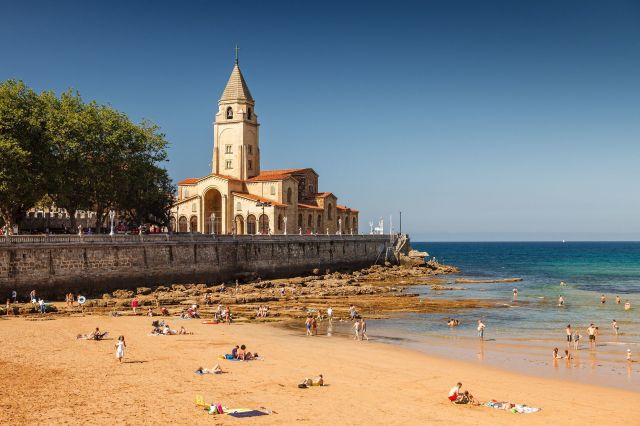

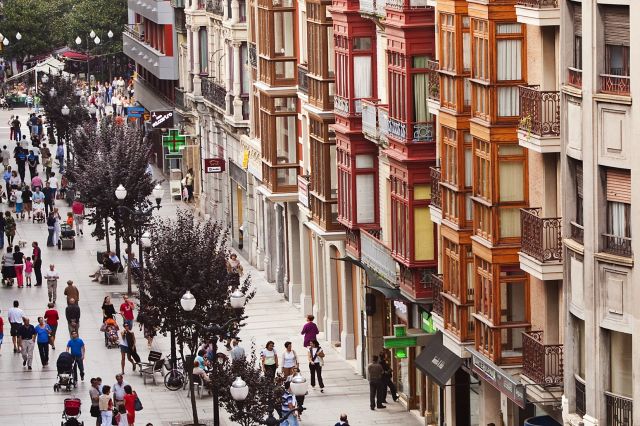
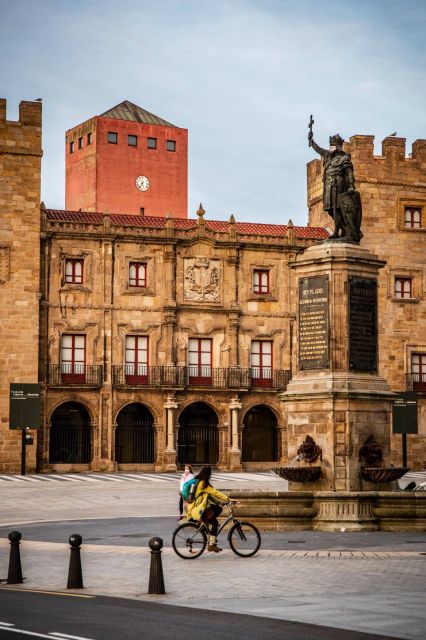
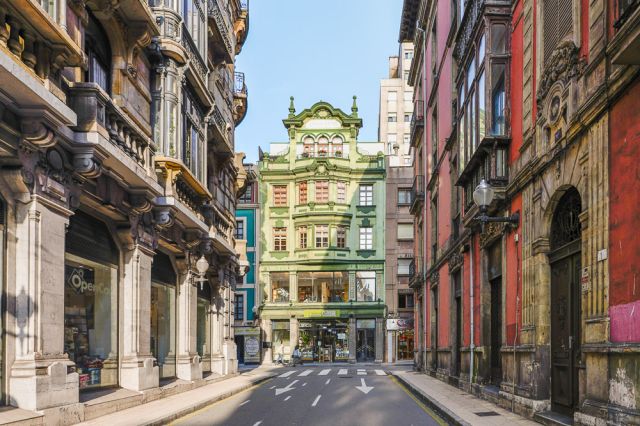
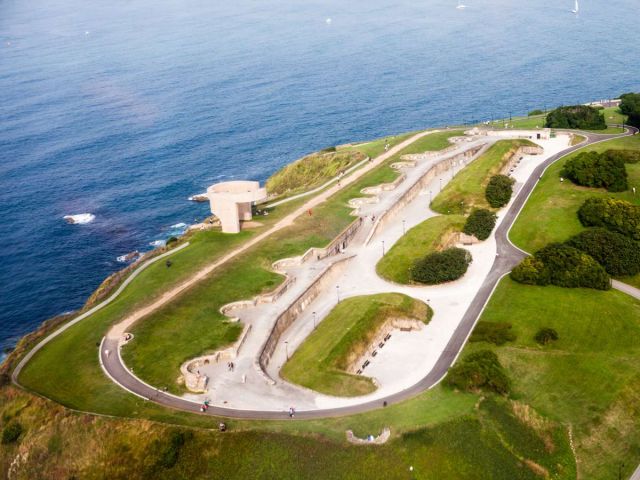
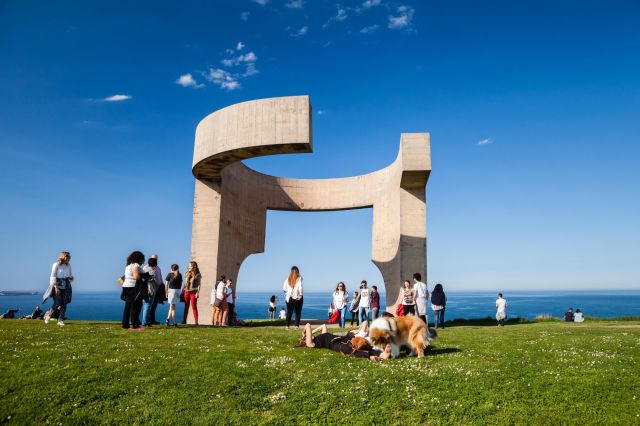












Poniente Beach
Poniente Beach is an artificial beach in Gijón, developed in the mid-1990s, which has since become one of the city’s most popular spots, especially during the summer. Located near the marina district, the beach was built on land that once housed old shipyards, transforming the area into a vibrant seaside destination. Its calm, clean waters consistently fly the green flag, making it ideal for water sports, particularly for beginners, and perfect for families with young children. A playground right on the sand adds to its appeal for younger visitors. The beach is well-equipped, frequently busy, and appreciated for its excellent facilities.
Palacio de Revillagigedo
The iconic Palace of the Count of Revillagigedo, originally built around a medieval tower and later expanded in the 18th century, is one of Gijón’s most recognizable landmarks. Since 1991, it has functioned as an International Art Center, along with the adjacent Collegiate Church of San Juan Bautista. The building has been carefully adapted to serve as a vibrant space dedicated to contemporary art, hosting exhibitions, artist residencies, academic gatherings, and public discussions on the latest artistic movements.
Colegiata de San Juan Bautista
This chapel, attached to the Palace of Revillagigedo, holds collegiate status and is dedicated to Saint John the Baptist (San Juan Bautista). Completed about fifteen years after the palace, it mirrors the palace’s Baroque style, maintaining consistency in both decoration and architectural design. The construction was funded by Luis Ramírez de Valdés, prior of the Cathedral of Oviedo and uncle to the Marquis of Revillagigedo. Architect Pedro Muñiz Somonte, in collaboration with Menéndez Camina, was responsible for designing key elements such as the roofs and the bell tower.
Elogio de Horizonte
Created in 1990 by renowned Basque sculptor Eduardo Chillida, the Elogio del Horizonte is a striking concrete sculpture that has become one of Gijón’s most iconic landmarks. Set atop the Cerro de Santa Catalina in the Cimadevilla neighborhood, the piece faces the sea and rises from the green landscape of the park that surrounds it.
With this work, Chillida invites viewers into a unique sensory experience: one that deepens their awareness of reality through contemplation. The sculpture blends the stillness of the observer with the movement of space and time, offering a harmonious balance shaped by introspection and the surrounding natural elements
Beach of San Lorenzo
San Lorenzo Beach is perhaps the most iconic and visited beach in Asturias. Stretching along Gijón Bay, it is considered one of the true gems of northern Spain. The beach is framed by the Cerro de Santa Catalina to the west and the mouth of the River Piles to the east. Spanning approximately 1.5 kilometers, it attracts numerous visitors, especially in summer, thanks to its wide range of amenities, including beach volleyball courts, a beach soccer field, and excellent services for swimmers and sunbathers alike.
Church of San Pedro
The Church of San Pedro is a prominent Catholic church and one of the most emblematic landmarks in Gijón. Positioned in Campo Valdés, it stands at the edge of San Lorenzo Beach, right at the base of the historic Cimadevilla neighborhood. Its seaside location and architectural significance make it a key part of the city’s cultural and spiritual identity.
Church of San Jose
The Church of San José, located on Álvarez Garaya Street in Gijón, is a Catholic church constructed in the 20th century to replace the original structure, which was destroyed during the Spanish Civil War. The current design draws influence from Colonial Baroque architecture, reflecting the Franco-era preference for historical revival styles in religious buildings. The church features a three-nave layout, flanked by wide galleries on either side, contributing to its spacious and monumental interior.
PRICE
PRICE
